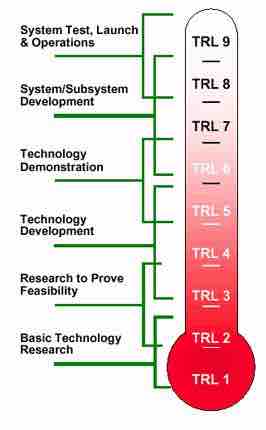Technology Sourcing Strategies
Technology sourcing, or the pursuit of implementing new technologies within a businesses strategic framework, involves isolating and applying new technologies to current models. Technology can be developed internally or isolated through technology scouting and then implemented through technology transfer. In deciding which approach is optimal for them, organizations must consider such factors as the advantage of being first to market, research and developments costs and capabilities, and market research and data gathering costs. Therefore the strategies behind sourcing technology can be complex, varying by industry, company size, economic strength, and the availability of easily implemented technology.
Technology Scouting
Technology scouting is essentially forecasting technological developments through information gathering. Technology scouts can either be internal employees or external consultants specifically designated to the task of researching developments in a particular technological field. This can be loosely referred to as a three-step process:
- Identify emerging technologies.
- Channel and organize new technological data within an organization.
- Provide a corporate context to support or refute the acquisition of said technology.
When technology scouting isolates new developments that could potentially provide advantages for an incumbent, strategies to acquire or source this technology become a focal point. Technology transfer, and the commercialization of technological abilities, is an enormous market both in the U.S. and abroad. Though governments, universities, and open source websites (such as Sourceforge, Wikipedia, and Boundless) often provide knowledge and technological know-how free of charge, most often technology is not free.
Technology Sourcing Pros and Cons
In the Information Age knowledge is power, and more than ever companies are trying to protect their knowledge from competitors or freeloaders by using patents and trade secrets. Transfer of technology is therefore expensive, from licensing the patented technology to requesting training in new technological advances for staff. Despite the distinct advantages of staying ahead of the curve relative to technological capabilities, there are some drawbacks to tech transfer. One strong example of the drawbacks in technological transfer and sourcing can be illustrated by the image below.

Stages in technology development
Technology develops through a series of stages: basic technology research, research to prove feasibility, technology development, technology demonstration, system/subsystem development, and system test, launch & operations.
The first five levels of innovation, from basic research to technology demonstration, are often where investment begins pouring in, alongside the attempt to implement in order to stay competitive. As you may note, this is prior to the testing phases and therefore investors at this stage must accept the inherent risk of the new technology presenting significant hurdles to optimizing perceived potential or effective implementation. Early adopters and innovators suffer the risk of employing a new technology that has not been fully debugged, minimizing what should have been strong returns on investment (ROI). Technology scouts should therefore be highly circumspect and meticulous in their research processes, ensuring that new technological innovations will indeed provide what they promise.